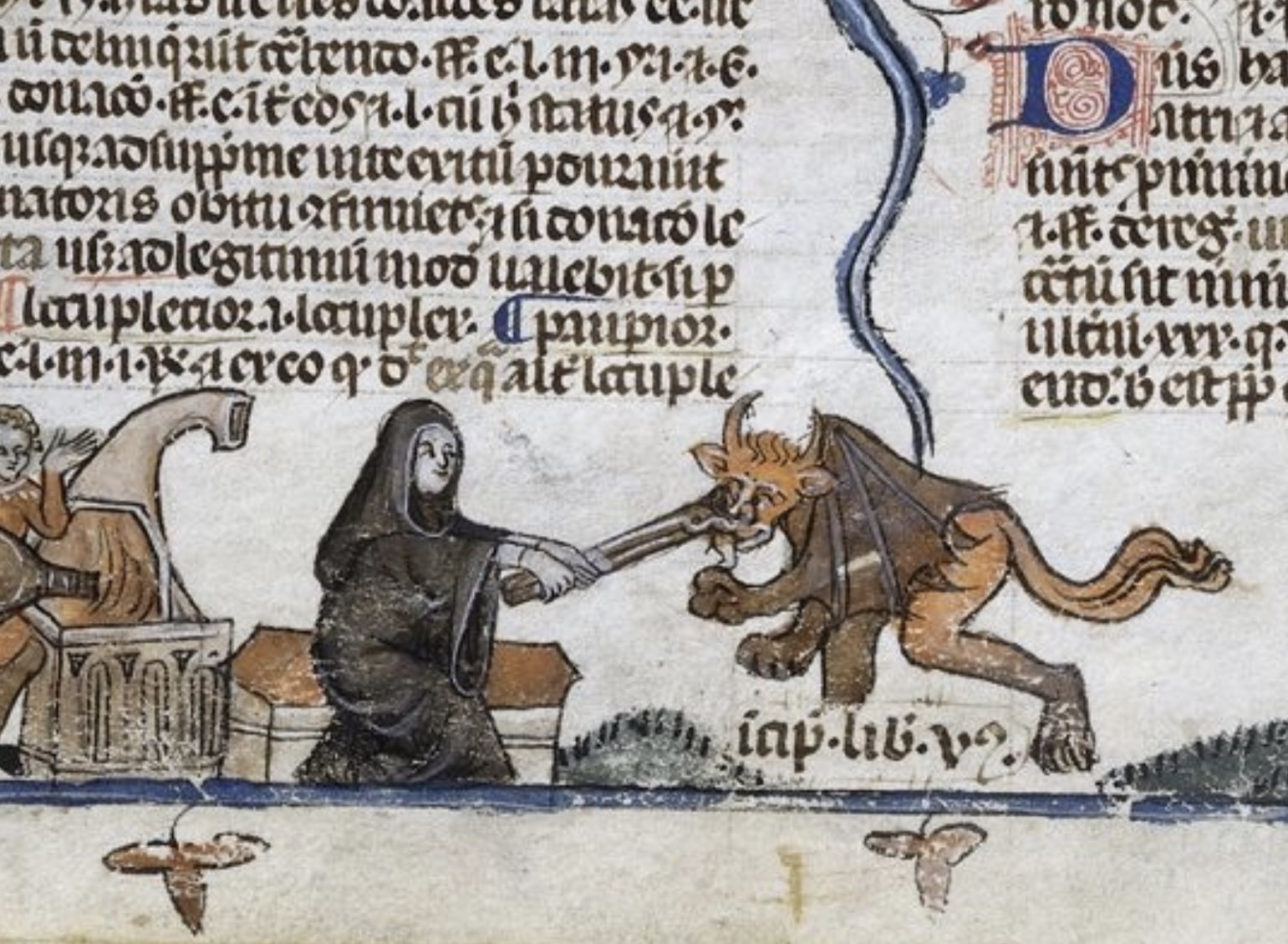2.10- The Devil and The Blacksmith
This week we are lucky enough to have famed folklore podcaster Mark Norman on the show. Read on to find out more about him and the ancient legend of The Devil and the Blacksmith.
Skill or Dark Magic?
For thousands of years, people have been fascinated with the idea that you could gain great skills from either divine gift or devilish dealings. Perhaps this is why As well as discussed with Mark in the episode, possessing extraordinary skills in any area of craft often makes people suspicious. How else could someone become so much better than anyone else? It is easy to see how the story can develop from here, especially under the Christian church.
2. The Patron Saint of Blacksmiths
Every craft has its own saint to watch over those who ply that trade and blacksmithing boasts an association with one of the most famous saints of medieval England. St. Dunstan began life at the court of Alfred the Great but was hounded out after he was accused of dark magic because his skills with the harp were just too good to be human. Instead of taking this as his cue to delve into the darkest of magics, Dunstan took holy orders and set about reinvigorating the monastic system in England. As skill in metallurgy as he was with the harp, stories quickly arose about Dunstan battling with the devil, who in various guises tries to trick the holy man into creating something for him. Until the martyrdom of St Thomas a Becket in the 1100s, St Dunstan was one of the most popular English saints, vererated for his victories over evil.
Wayland and the Old Gods
Of course, the story of The Devil and the Blacksmith predates Christianity. But the idea of supernatural skill is an old one. Wayland’s Smithy takes its name from Wayland or Wolund a Germanic smith god who probably became popular as the culture of the Angles, Saxons and Jutes spread across England in the Dark Ages. But this Neothilic long barrow predates even this ancient legend. It is easy to see how such a dramatic location, with its proximity to the Uffington White Horse, gave rise to the local legend that you could leave a horse and payment over night and come back the next day to find that the horse had been shod. Whether that can be attributed to divine intervention or merely neighbourly enterprise is up to the reader to decide.

